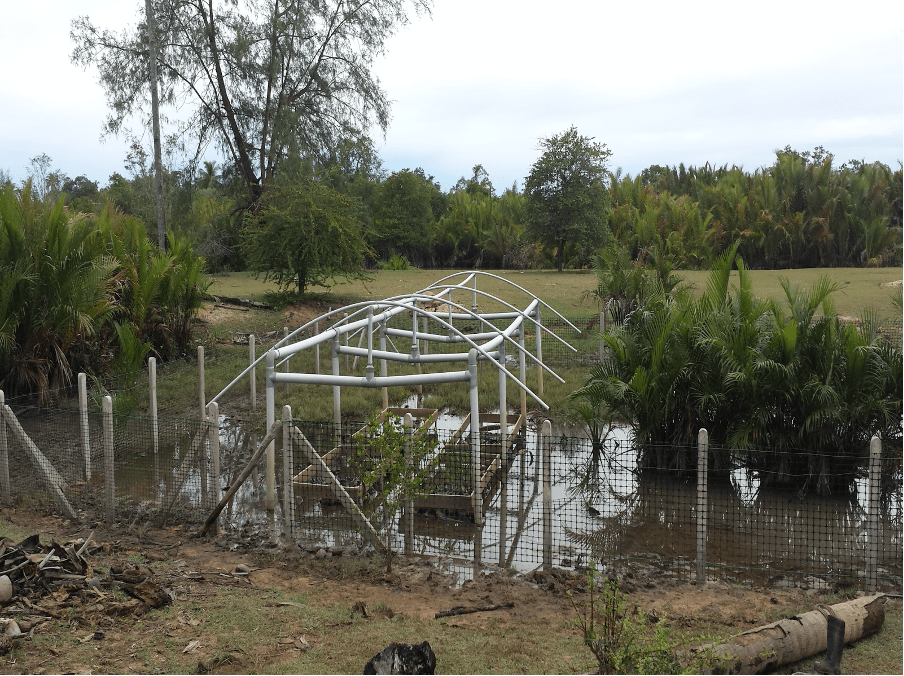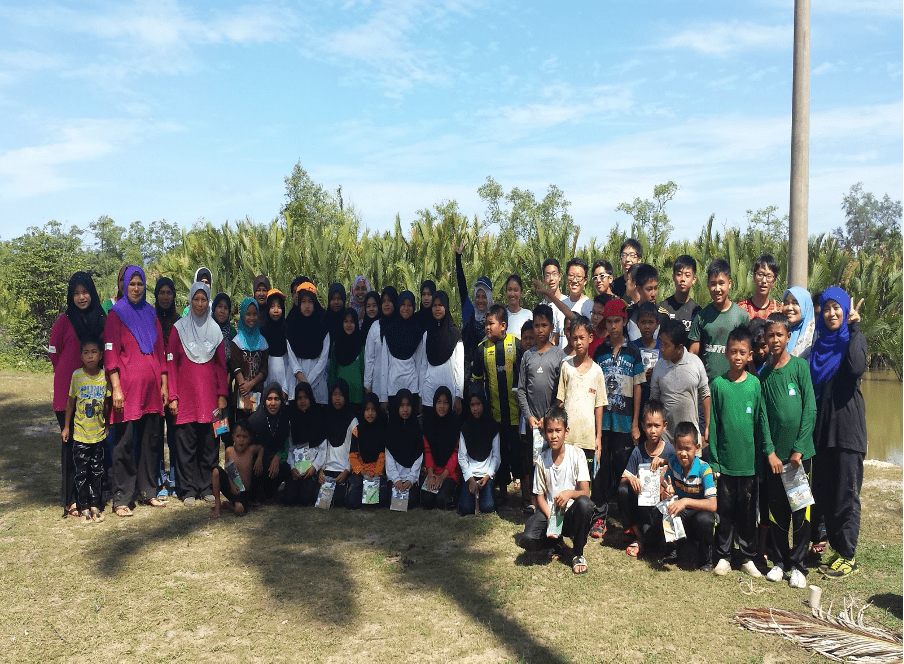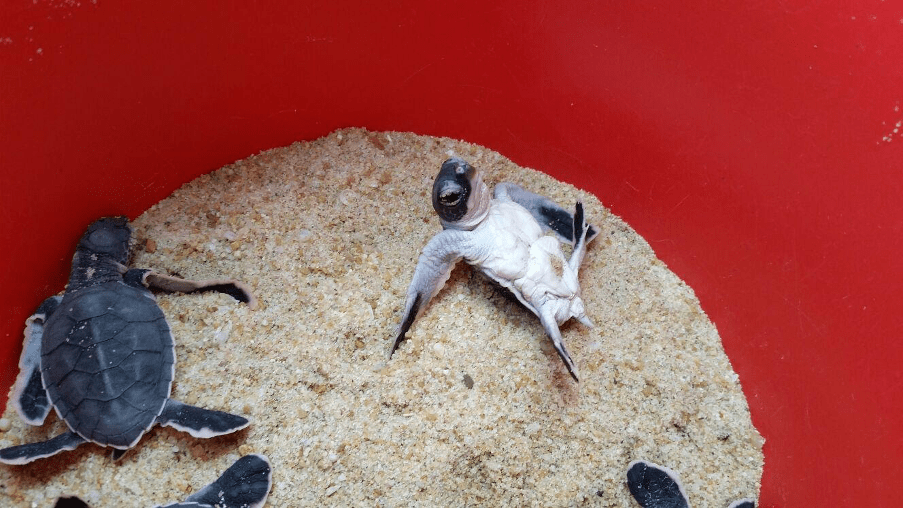Hi guys! It’s nearing the end of the semester already, and with that this will probably be my final post on this blog. I just want to say a big thank you to all of you for your insightful comments thus far and your awesome responses to my survey. They really spurred me to think deeper and open my mind to so much more about the wonders of our mangroves. I also hope that some of the things I’ve shared here have been beneficial for your appreciation towards this amazing but often overlooked ecosystem that we have right here on our shores.
I thought it would be really apt to end off by sharing with you guys the experience that kind of reignited my passion for mangroves and in fact, for the environment as a whole. I was reading through Jia Wei’s first post when I realised that hey, like some of my peers I have a “significant event” story to tell.
In 2015, I was blessed with the opportunity to go on a service-learning cum eco-tour school trip to Kampung Mangkuk in Terengganu, Malaysia where we took part in mangrove restoration and sea turtle conservation activities. I’m not exaggerating when I say that it was the happiest week of my life, I felt so carefree and so in touch with nature that I thought to myself, I got to do something environment-related in the future, and that is one of the reasons why I’m here now in BES. Coincidentally, NHK World Japan recently published a short documentary on the programme which stirred up copious amounts of nostalgia for me, do give it a watch if you have the time.
The main interviewee in the video, Rusnita (whom we affectionately addressed as Kak Ta), personally hosted us during our stay there. We had delicious home-cooked nasi lemak at her place for breakfast every morning and had tons of fun trying to catch chickens and goats during our free time.

Kampung Mangkuk is located along the Setiu Wetlands on a small stretch of land between Sungai Setiu and the South China Sea. As part of our service-learning component, we helped to build a fence around the main mangrove nursery in the village to prevent free-roaming cattle from trampling on the seedlings. We got our hands dirty, spending hours in the mud each day digging holes to insert the concrete pillars into. And here you can see the end result, after a week of hard work.

But during the process, I was simply amazed by the biodiversity around me. From little purple crabs to mudskippers, shellfish and even pufferfish, I thoroughly enjoyed observing and trying to catch all these little creatures. It was here that I was able to most intimately encounter the rich biodiversity of mangroves, which re-sparked something within me that had dwindled over my teenage years.
On the last day, we joined Pewanis (the local women’s community group) and the rest of the village kids in taking part in a mass mangrove replanting programme, where we transplanted the seedlings from the nursery into the mudflat. It was truly awesome to see how this programme not only empowered the women to hone their leadership and social skills, but also allowed the children to play an active role in mangrove conservation efforts in the community from such a young age. And by the way, those kids can dig better than any of us!

Of course apart from the mangroves, the other experiences I gained from the trip were just as significant in opening my eyes to the minimalistic beauty of nature. From the green sea turtle hatchery and night patrols, to the general laidback kampung vibe, I have so much more to share on these experiences, but I guess those are stories for another time and place.


If you are interested to find out more about this programme, you may like to check out Project Orion – Rovering with Turtles, a project under The Scouts of the World Award (SWA) in partnership with Pewanis and WWF – Malaysia which brings Singaporean scouts to the place annually (Ee Kin, you might be eligible). FYI, I’m not a scout and I could only go as part of an unaffiliated school trip.
All in all, I really hope that you guys have enjoyed reading my blog as much as I have enjoyed writing and sharing about our mangroves with you. It’s truly been a pleasure and a privilege. On a side note, I hear that BES Drongos may be opening up guided nature walks at Pasir Ris Park Mangroves sometime next year, and if it happens I’ll certainly signup as a guide there. So do look out for this opportunity too! Thank you and see you all around soon!
Image sources: all photos were taken by my teacher, Mr Tan Sijie
Hello Marcus!
What a great way to end off your blog by sharing what inspired you to love mangroves and join BES in the first place! Hearing about your experience really excites me and I really hope I could get a similar experience someday 🙂 I’m so glad to hear how the programme has been empowering the women as well, what a beautiful picture of conservation and empowerment this is!
For me, the exposure with marine biodiversity was also what kickstarted my passion and love for the environment! And in your post, you shared how your experience looking at and catching the wildlife created an intimate experience for you with nature.
I think many people do the same and can’t resist touching or catching peculiar organisms they find, but do you think it’s better to leave these organisms untouched? Relating back to mangroves, perhaps it’ll be a question of whether people should be allowed in these mangroves so that they can forge their own, intimate experiences with mangroves that will hopefully, spark off a love for mangroves!
Do you think then, that boardwalks inhibit the public from gaining these intimate experiences? Considering the tradeoffs, would you agree with although the boardwalks reduce the intimacy the public gets interacting with the mangroves, protecting these mangroves from trampling and organisms from careless handling is more important?
Looking forward to your reply!
– Yee Qi
Hi Yee Qi!
Thanks so much for dropping by and for your kind comment! I’m really happy to see that this has touched your heart as well. You ask a very interesting and fun question, and I’ll try to answer as honestly as possible.
The ‘right’ answer would be that we should leave the little creatures alone and observe them from a distance, so as not to disturb them in their natural habitat. However, like you correctly pointed out, catching these critters was what gave me such an intimate experience with nature. Of course if everybody in the world were to be like me and try to catch everything they see, that would be a huge problem for biodiversity. But I also know that is never going to happen, because the majority today don’t even have adequate exposure to nature, not to mention catching animals.
I don’t know if this is a good analogy or not, but it’s a bit like bringing a bunch of kids to a playground and telling them, “you should not play on the monkey bars as you may injure yourself”. Assuming they are an obedient bunch, most of them would listen to you, but there will always be the few who will still go ahead on the monkey bars anyway and they’ll have a great time! And you know what they are doing, but you choose to pretend that you didn’t see it. You cannot endorse them because you can’t have everyone doing it, but you know they are gaining a little more than the rest. Hope you get my drift 😉
So regarding your question on boardwalks, my answer to that is no, I believe that our existing boardwalks are doing a fantastic job in bringing the masses as close as possible to the flora and fauna without doing them any harm. It is certainly less intimate than physically going down to the mudflat to interact with the creatures, but we can’t just let anyone do that without regulation. But that’s not to say that there’s no opportunity to do so, as members of the public can sign up for guided walks that will bring them face-to-face with nature in the most intimate ways. For instance, NParks offers guided walks onto the mudflats of Chek Jawa, and intertidal zones at Sisters’ Islands, biodiversity-rich places which are closed off to the public.
Essentially, when bringing members of the public to explore sensitive ecosystems, I think it is of utmost importance that the guide be responsible and professional about his or her role, and he or she must exercise discretion in what the participants can or cannot do. If the guide says that we can try to catch the animals, then by all means we can do so. But if the guide says that this animal is fragile or endangered, then we must leave them alone. If we stick to these rules, people would still be able to have their intimate experiences with nature, but in a safe, supervised setting for both themselves and the organisms.
Hope this answers your questions Yee Qi, and I would love to hear about your story one day too! Cheers!